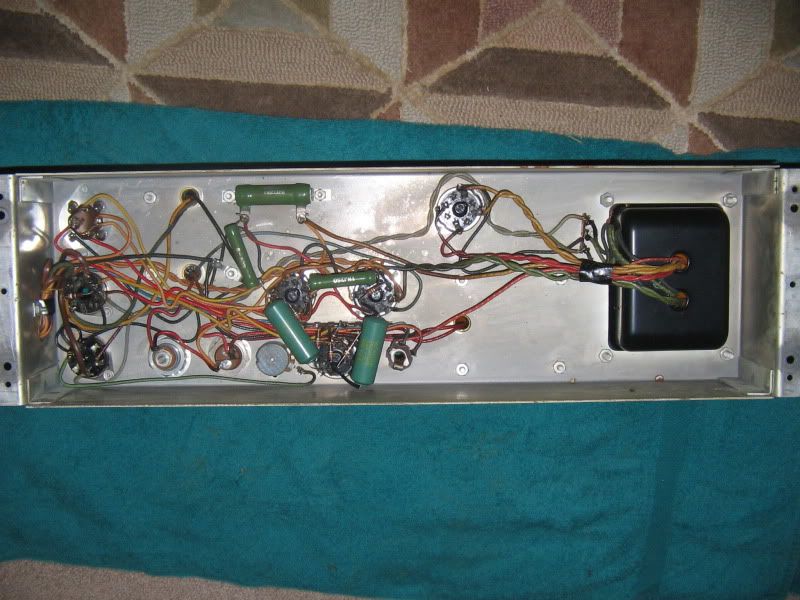I've been collecting organ parts for a while and think I might have a chassis that might make for a great conversion.
I'm trying to get a schematic for it, but no luck yet. I have most of it drawn out, but for an amp having so few parts, it gets really confusing. I've sent an e-mail to a guy that I know either has or had the schematic, hopefully he'll come through.
In the meantime, I need to start thinking about a preamp to use. That's where you guys come in. Does it look like there is enough room on the chassis to add a preamp? (I don't really understand the concepts behind chassis layout and lead dress yet. Seems a little like voodoo.) If adding it to this chassis will cause problems, I suppose I could build the preamp on a separate chassis and eventually build it into the same cabinet (but for all I know this might pose problems as well).
I'm also open to suggestions as to which preamp designs might be a good match. I have a bunch of 12ax7s, 12au7s, and 6sn7s laying around. (The 6sn7 might be cool 'cause of the octal base.) I don't need a bunch of controls, volume, treble and bass would be nice. The amp already has a pot on it labeled "gain". Would this act as a Master volume?
Any other tips or suggestions would be welcome as well.
The tubes are: 2x6L6GC, 6SL7, 5U4GB


Thanks, Shannon
I'm trying to get a schematic for it, but no luck yet. I have most of it drawn out, but for an amp having so few parts, it gets really confusing. I've sent an e-mail to a guy that I know either has or had the schematic, hopefully he'll come through.
In the meantime, I need to start thinking about a preamp to use. That's where you guys come in. Does it look like there is enough room on the chassis to add a preamp? (I don't really understand the concepts behind chassis layout and lead dress yet. Seems a little like voodoo.) If adding it to this chassis will cause problems, I suppose I could build the preamp on a separate chassis and eventually build it into the same cabinet (but for all I know this might pose problems as well).
I'm also open to suggestions as to which preamp designs might be a good match. I have a bunch of 12ax7s, 12au7s, and 6sn7s laying around. (The 6sn7 might be cool 'cause of the octal base.) I don't need a bunch of controls, volume, treble and bass would be nice. The amp already has a pot on it labeled "gain". Would this act as a Master volume?
Any other tips or suggestions would be welcome as well.
The tubes are: 2x6L6GC, 6SL7, 5U4GB


Thanks, Shannon
Comment